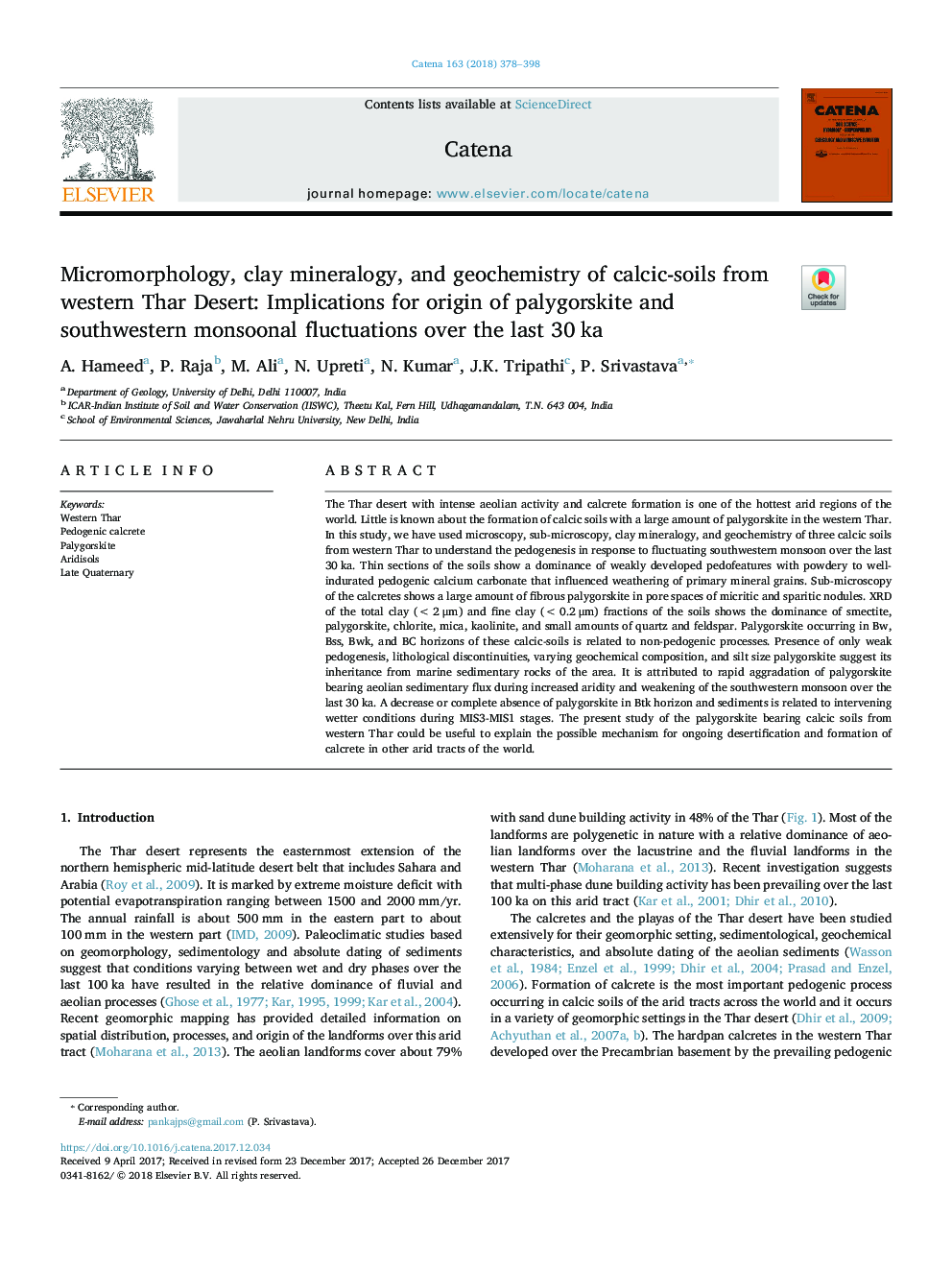| کد مقاله | کد نشریه | سال انتشار | مقاله انگلیسی | نسخه تمام متن |
|---|---|---|---|---|
| 8893712 | 1629191 | 2018 | 21 صفحه PDF | دانلود رایگان |
عنوان انگلیسی مقاله ISI
Micromorphology, clay mineralogy, and geochemistry of calcic-soils from western Thar Desert: Implications for origin of palygorskite and southwestern monsoonal fluctuations over the last 30Â ka
دانلود مقاله + سفارش ترجمه
دانلود مقاله ISI انگلیسی
رایگان برای ایرانیان
موضوعات مرتبط
مهندسی و علوم پایه
علوم زمین و سیارات
فرآیندهای سطح زمین
پیش نمایش صفحه اول مقاله

چکیده انگلیسی
The Thar desert with intense aeolian activity and calcrete formation is one of the hottest arid regions of the world. Little is known about the formation of calcic soils with a large amount of palygorskite in the western Thar. In this study, we have used microscopy, sub-microscopy, clay mineralogy, and geochemistry of three calcic soils from western Thar to understand the pedogenesis in response to fluctuating southwestern monsoon over the last 30 ka. Thin sections of the soils show a dominance of weakly developed pedofeatures with powdery to well-indurated pedogenic calcium carbonate that influenced weathering of primary mineral grains. Sub-microscopy of the calcretes shows a large amount of fibrous palygorskite in pore spaces of micritic and sparitic nodules. XRD of the total clay (< 2 μm) and fine clay (< 0.2 μm) fractions of the soils shows the dominance of smectite, palygorskite, chlorite, mica, kaolinite, and small amounts of quartz and feldspar. Palygorskite occurring in Bw, Bss, Bwk, and BC horizons of these calcic-soils is related to non-pedogenic processes. Presence of only weak pedogenesis, lithological discontinuities, varying geochemical composition, and silt size palygorskite suggest its inheritance from marine sedimentary rocks of the area. It is attributed to rapid aggradation of palygorskite bearing aeolian sedimentary flux during increased aridity and weakening of the southwestern monsoon over the last 30 ka. A decrease or complete absence of palygorskite in Btk horizon and sediments is related to intervening wetter conditions during MIS3-MIS1 stages. The present study of the palygorskite bearing calcic soils from western Thar could be useful to explain the possible mechanism for ongoing desertification and formation of calcrete in other arid tracts of the world.
ناشر
Database: Elsevier - ScienceDirect (ساینس دایرکت)
Journal: CATENA - Volume 163, April 2018, Pages 378-398
Journal: CATENA - Volume 163, April 2018, Pages 378-398
نویسندگان
A. Hameed, P. Raja, M. Ali, N. Upreti, N. Kumar, J.K. Tripathi, P. Srivastava,